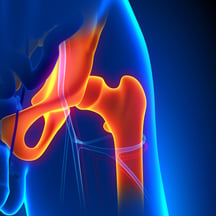The stage is set and the curtain goes up April 1. That’s when the Centers for Medicare & Medicaid Services’ (CMS) new Comprehensive Care for Joint Replacement (CJR) value-based payment rule will take effect.
(CMS) new Comprehensive Care for Joint Replacement (CJR) value-based payment rule will take effect.
This marks the first time CMS has required participation in a value-based program. In the CJR model, hospitals are financially responsible for the quality and cost of an “episode of care” for hip and knee replacements, from admission all the way through 90 days post-discharge. The “episode” includes all related items and services, including post-operative imaging exams, paid under Medicare Part A and Part B for all Medicare fee-for-service beneficiaries. Honestly, hips and knees are likely just the beginning. Consider this “Act One” of bundled payments for common inpatient surgeries.
This isn’t just a local production either. The CJR model will be implemented in 67 metropolitan statistical areas, forcing nearly 800 acute care hospitals to be fully burdened with the risk, despite that, for many of them, readmissions will be out of their control. Common causes of unnecessary readmission are often related to patient adherence and poor care coordination as the patient moves step by step through the care continuum. With a typical hip or knee replacement, there are multiple handoffs throughout the patient’s recovery long after they have been discharged – the first hand-off.
The CJR model makes it imperative for hospitals to enhance risk mitigation strategies as they will be forced to comply with the program over the next five years. Three ways, I believe, hospitals of all sizes can mitigate their risk are:
- For starters, hospitals will need to track patient progress and care plans for at least 90 days. To handle this, a number of organizations are looking to supplement their discharge staff so they can make phone calls to patients at certain points after they leave the hospital.
Unfortunately, this manual approach will not be scalable as CMS adds more and more diagnoses. Not to mention, with the financial burden on hospitals that already operate on razor-thin margins – a manual approach isn’t affordable. Leveraging technology to provide continuous anywhere-anytime monitoring of the patients’ adherence coupled with real-time health data integration from wearables, apps and other mobile devices is a much more scalable and affordable solution.
- Hospitals will also need to get innovative with their strategies for managing their preferred networks and educating patients about their post-discharge options for care. Though hospitals have no control over where a patient chooses to go, developing risk-sharing contracts with a small, focused group of post-acute providers and then managing those contracts aggressively to provide the best quality of care at the lowest reasonable price will be critical.
Hospitals will then have to provide improved education around options, quality metrics and patient satisfaction scores that can help guide patients to the facilities and providers that best support the mission of getting the patient well and therefore reduce risk for the hospital. Those hospitals that capture and analyze data surrounding patient adherence, patterns of readmissions, provider performance and clinical outcomes will be better equipped to analyze risk and discover opportunities for improvement.
- Hospitals will need to “lift the curtain” and improve transparency into the care plan for both patients and members of care teams located inside and outside the hospital. By putting a system in place for multi-directional communication between patients and acute and post-acute care providers, with automated risk alerts, hospitals will be better positioned to intervene before the patient’s problems escalate. Hospitals with a risk stratification process to pinpoint which patients have the greatest likelihood for readmission will lead the way in improving patient outcomes and reducing readmissions.
The government’s goal with the CJR rule is to take a procedure where costs and outcomes vary wildly among providers (average Medicare expenditures range from $16,500 to $33,000 across geographic areas) and drive toward consistently better outcomes and lower costs. No physician or hospital administrator would argue with that intent – but they certainly may be concerned with being financially responsible for the entire performance group’s budget.
Although hospitals can’t predict exactly what “Act Two” of value-based reimbursement will include, they now have an even larger financial incentive to work with the skilled nursing facilities, home health agencies and other providers who play a role in ensuring quality care as patients undergoing hip or knee replacements transition from surgery to recovery.




Comments